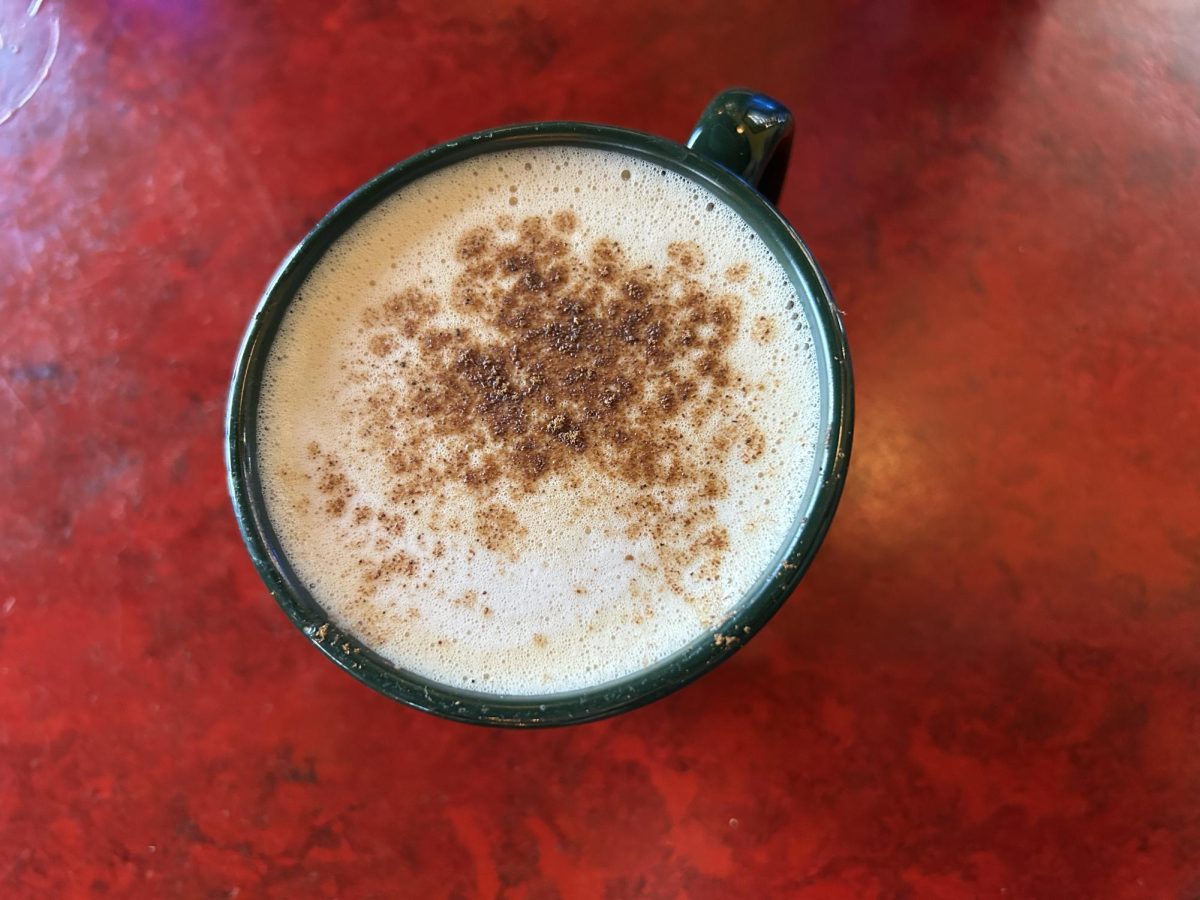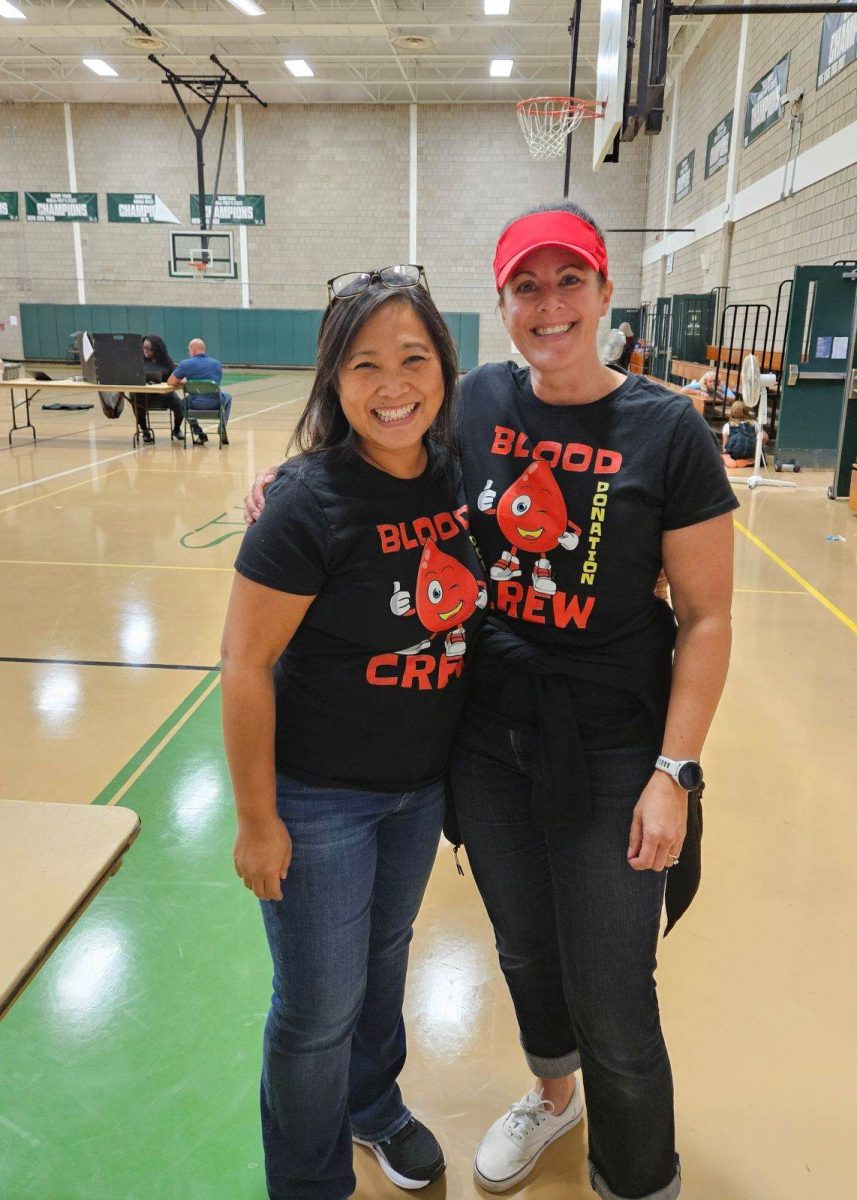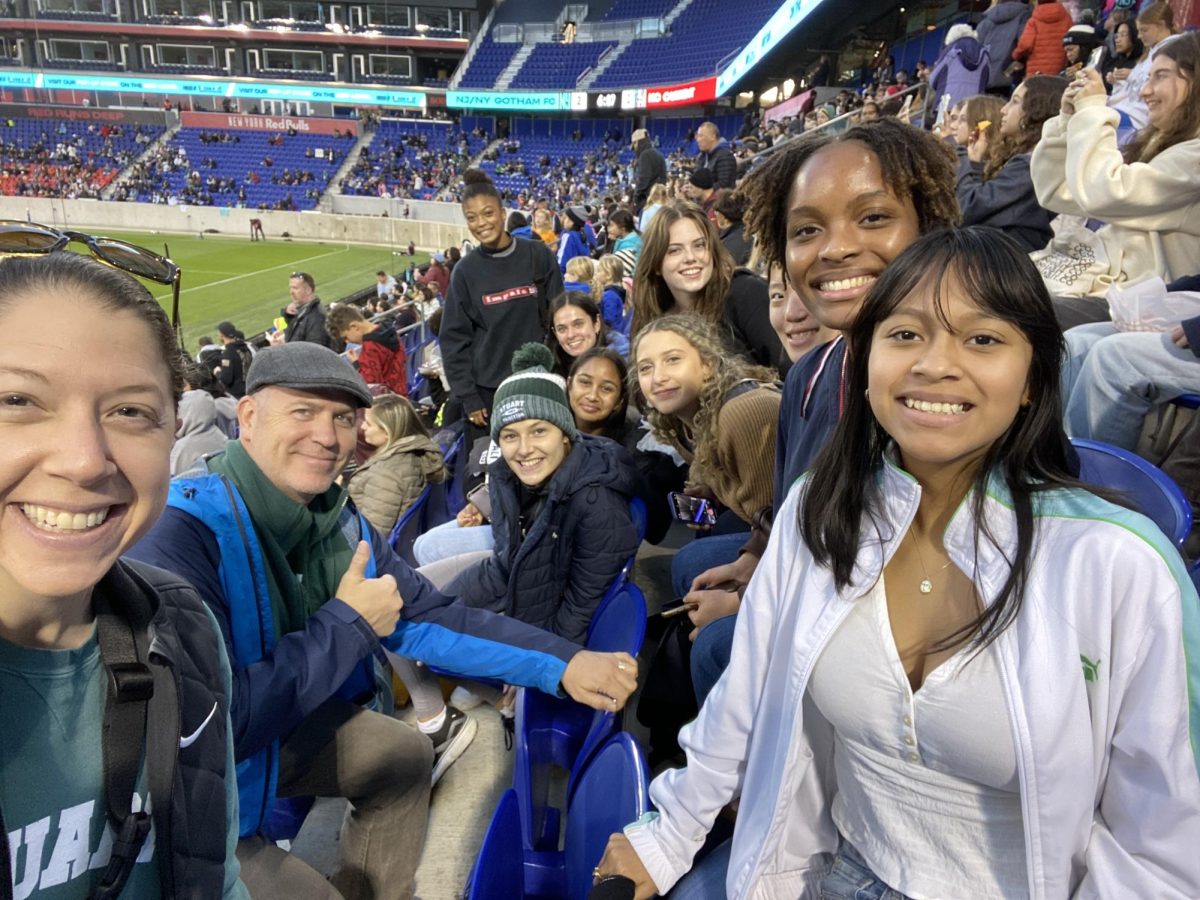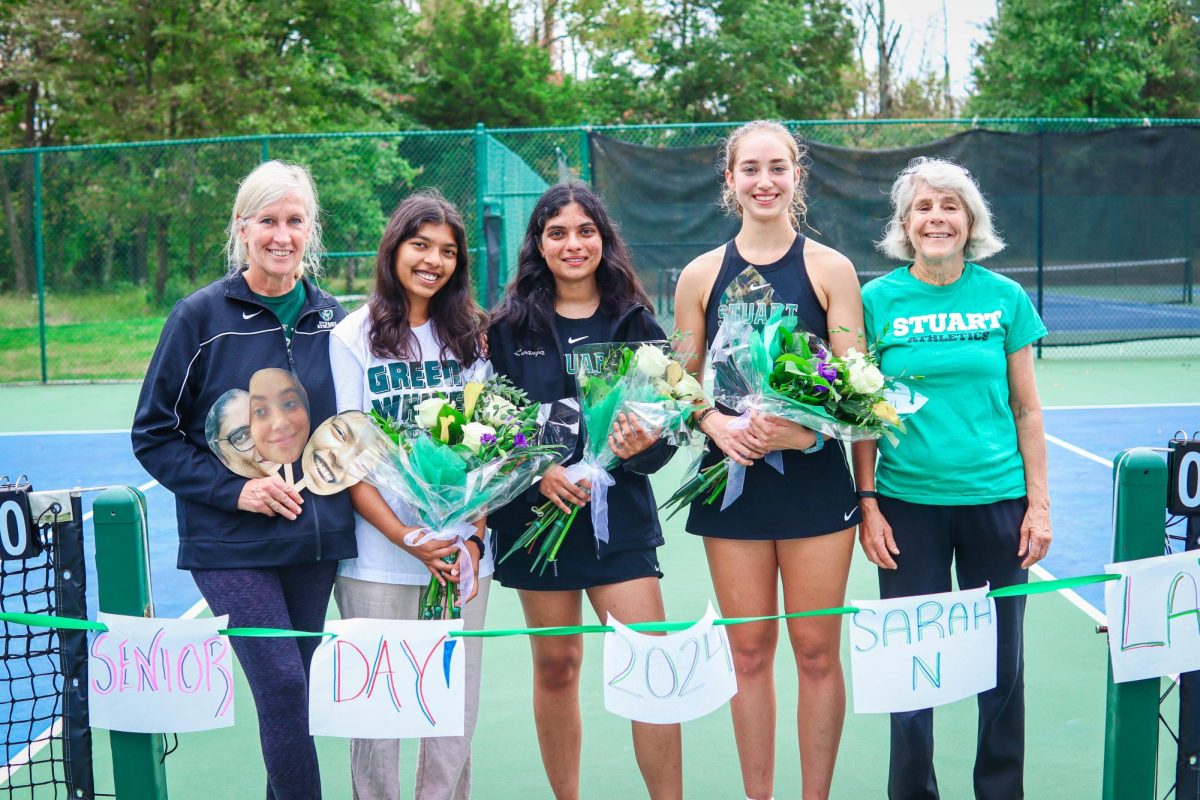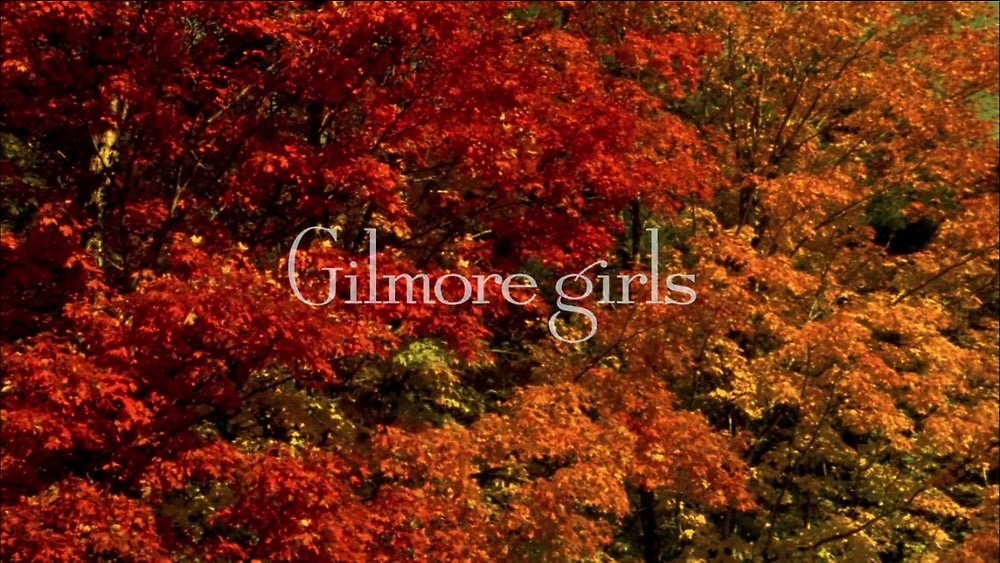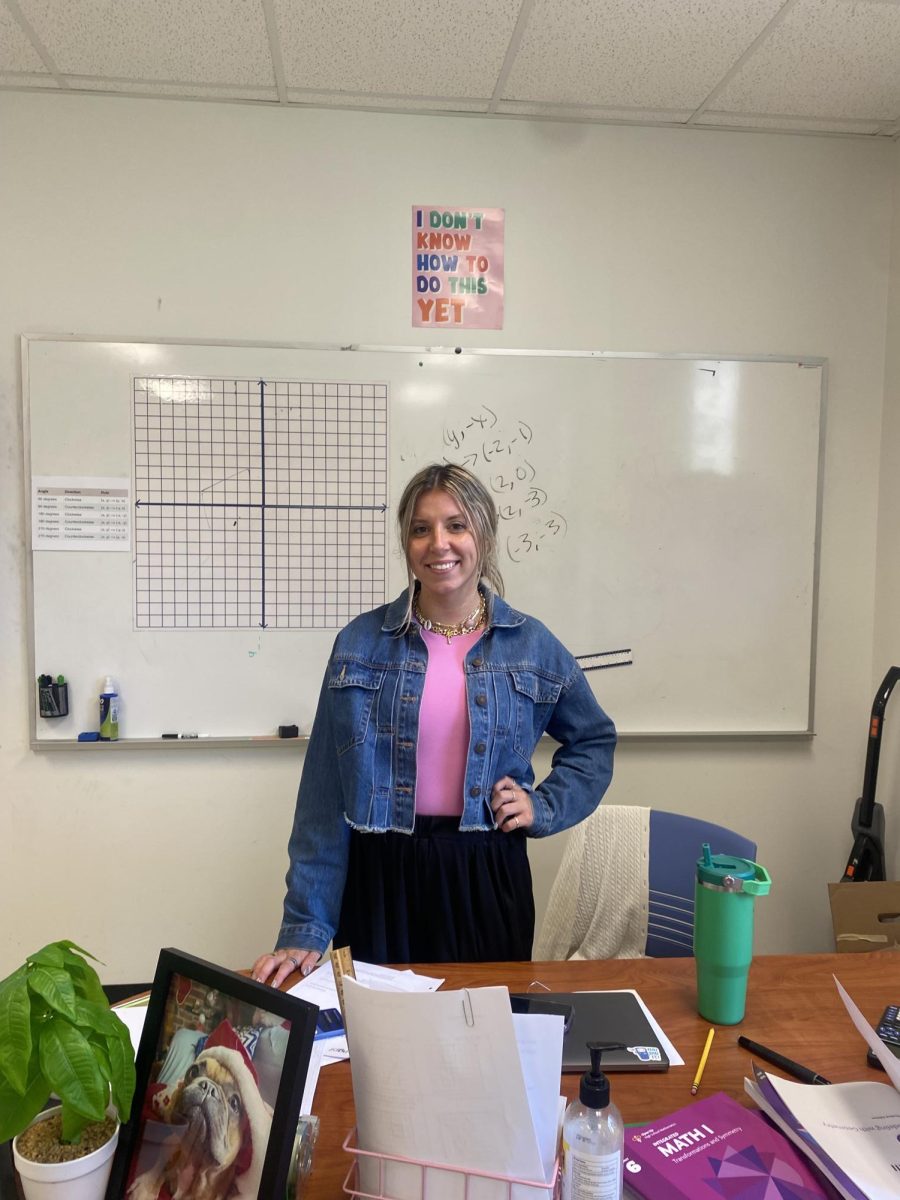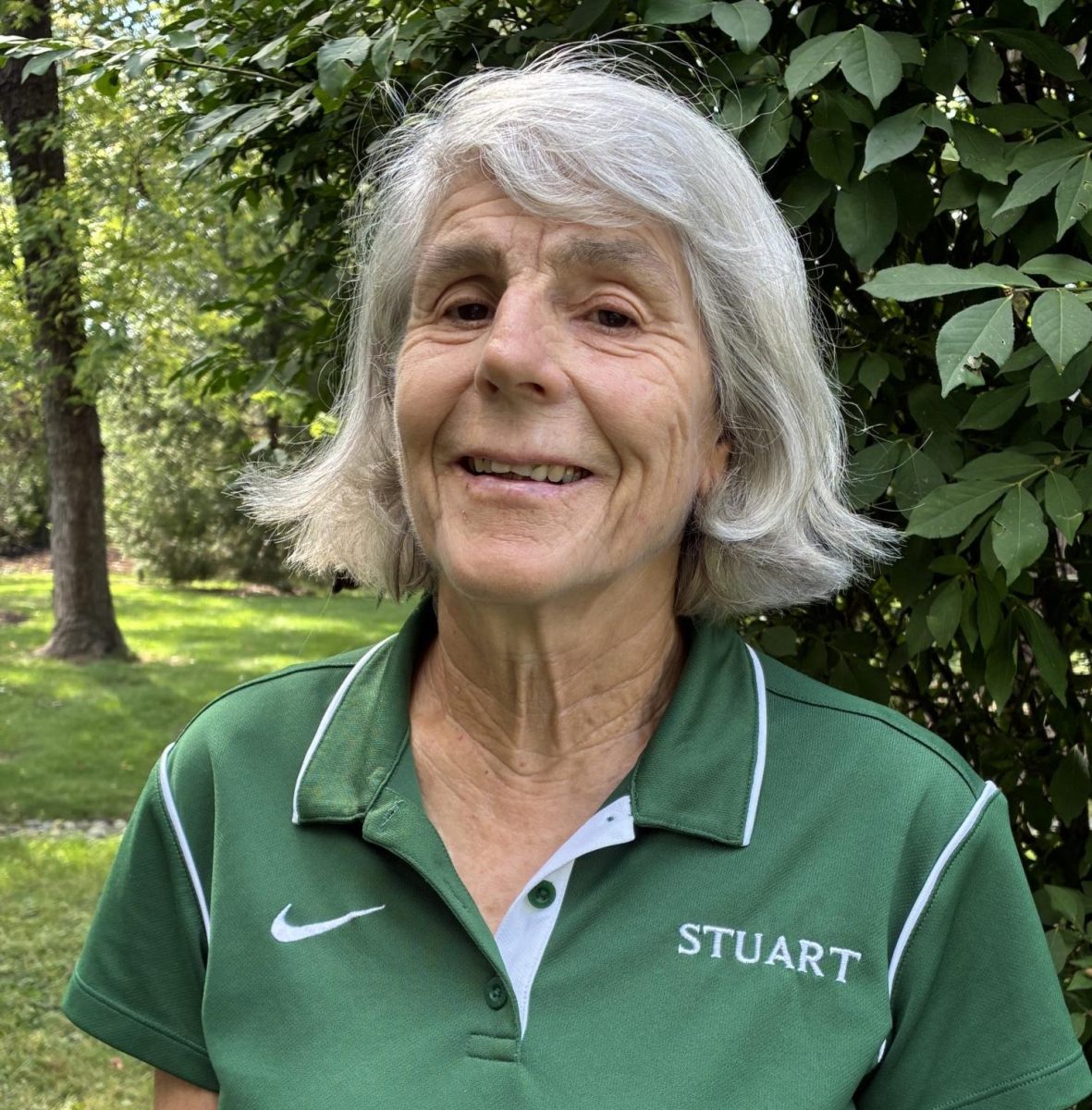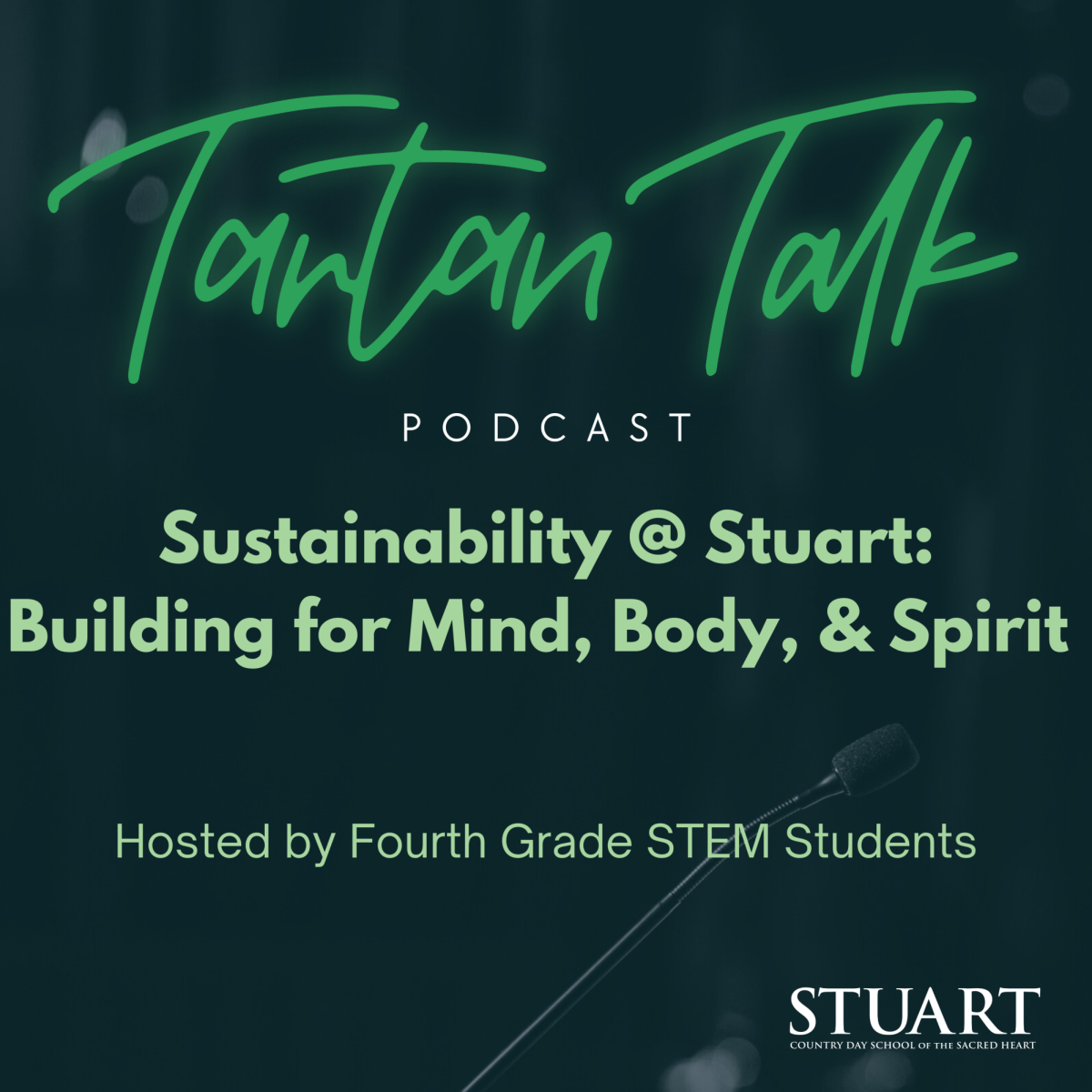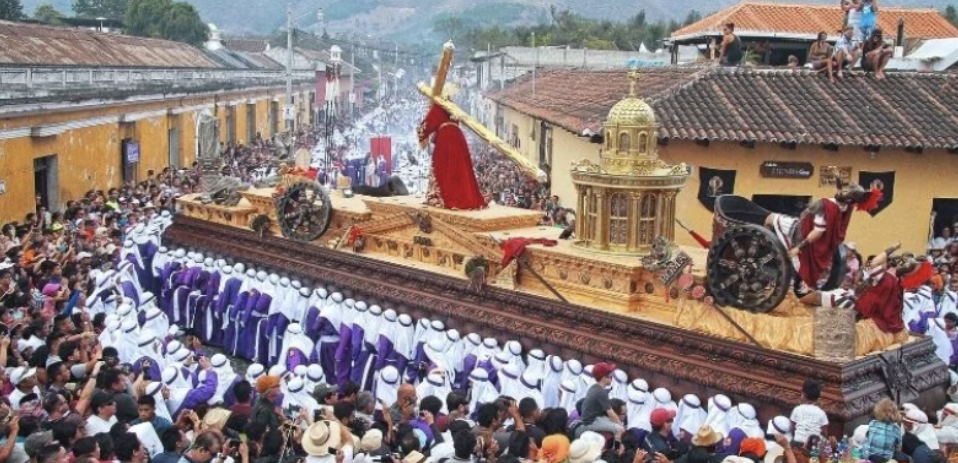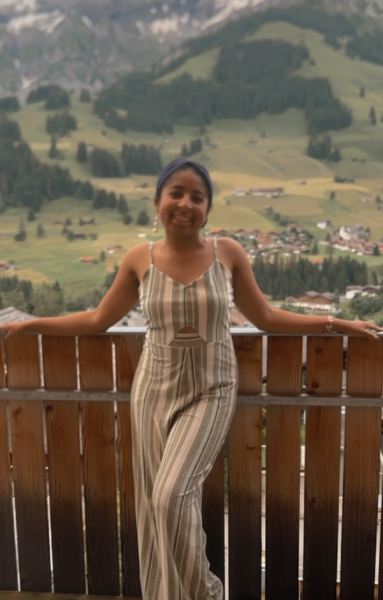The Philadelphia Flower Show is a greatly anticipated event, essentially marking the beginning of the spring season in Pennsylvania and the northeast. Whether you’re a fan of succulents, florals, or just want a little taste of nature, the flower show is for everyone!
This year, the theme was “Gardens of Tomorrow”, which, as you can imagine, was approached in many different ways. As dozens of displays and entries were showcased at the event, it could be a bit overwhelming to experience. But fear not, in this article, I will take you through my experience around the flower show, review some of my favorite and the most substantial pieces, and give you a tiny preview of all the event has to offer.
Picture this: it’s the year 3025, a time when the world has lacked human influence to the point of animals and plants overrunning homes, cities, and even amusement parks. This idea comes from a collaboration of aspects exhibited by contestants in the flower show. As we first walked in, we stumbled across a piece created by Jennifer Designs, a florist from Mullica Hill, NJ. Her piece was entitled Welcoming Wildlife Home, featured a house, completely shrouded in flowers and plants. On the inside, she depicted a dining room where a squirrel, turtle, bee, butterfly, and a few ants were seated as if they were about to eat.


In her description of Welcoming Wildlife Home, she writes that the piece “showcases the essential role of wildlife in maintaining a healthy, thriving ecosystem, grounded in biodiversity. A welcoming home symbolizes human interaction with nature, while beyond the windows, the garden comes to life with a rich tapestry of plants. This immersive display highlights how thoughtful plant choices and habitat creation support the intricate balance of wildlife.”
At first glance this piece reminded me of Alice in Wonderland, with its unexpected narrative. Who would ever see animals taking over our homes and living as humans do? In reality, this idea isn’t too far fetched. With the understanding of global climate change at its current state, who knows what the fate of the human race will be? It’s a scary thought, but at the same time, it puts emphasis on the damage we have done. Welcoming Wildlife Home isn’t just an art piece, it’s a call to action.
Further into the show, we found a post-apocalyptic- looking cityscape. Similar to Welcoming Wildlife Home, this exhibit featured a city completely overgrown with tangled vines and plants; they were all connected to a giant tree found in the center, just before the rest of the skyline. At the very front, were silhouettes of a mom and her daughter created through mirrors. This piece was entitled Tending Our Roots, and was created by Robertson’s Flowers & Events in Wyndmoor, PA.
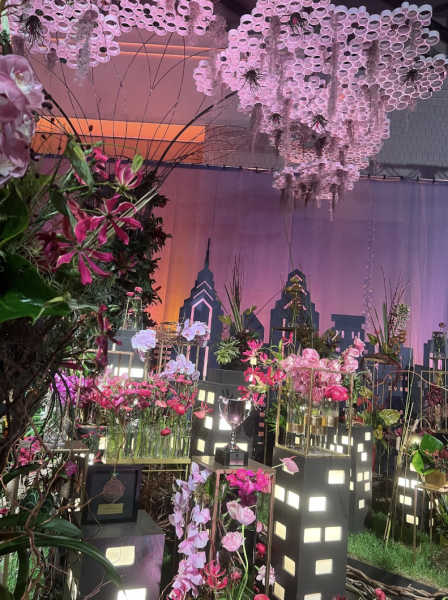
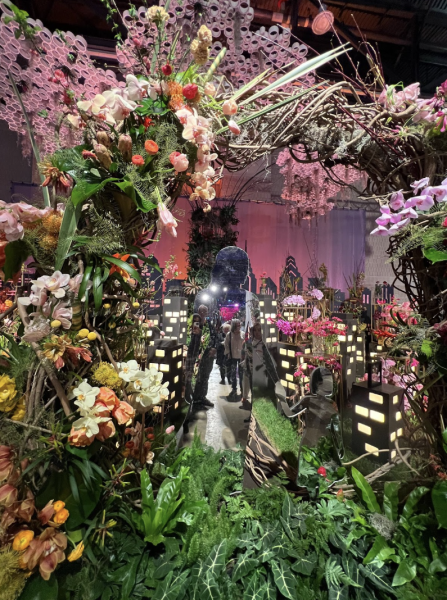
According to the curator, the display has a spiritual aspect, as the inspiration loosely derived from the proverb, “One generation plants the trees; another one gets the shade”, alluding to the idea that the fault of the previous generation falls onto the current one. Robertson’s writes in his description “Our central Tree of Life figure – drawn from a real world park in Singapore, focused on sustainability – symbolizes the efforts of the present generation in planting the seeds for a future filled with ecological and environmental benefits. Beneath this great canopy lies a cityscape in which we can all bloom, where our roots connect us through a common weave under the promise of a shared sunrise.”
I find this piece to represent a sweeter ideal. Though many problems have fallen subject to a new generation, the hope of the future lies with them as well. Robertson’s piece shows a reality of harmony, where people can live in tandem with nature while reaping the benefits of a more environmentally friendly world.
Walking just a bit further, we ran into The Imagining of the Heavenly Gardens, created by Simply Nia Design from Brooklyn, NY. This exhibit featured an asymmetrical staircase, lined with bushels of flowers, leading up to a space unknown.
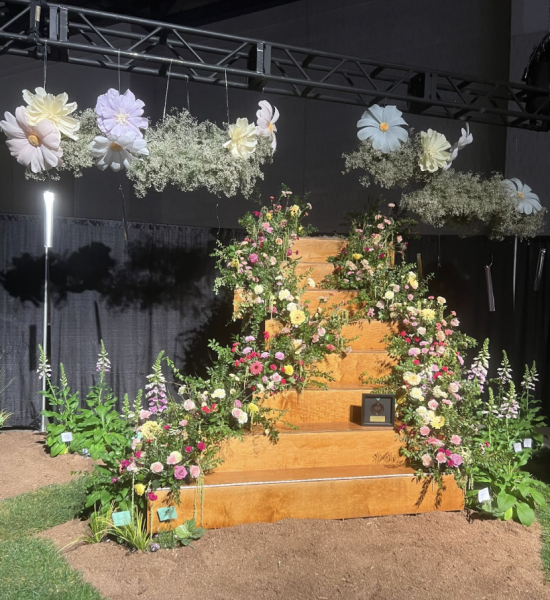
The award winner states that she “[has] been on a personal and professional journey believing that [her] faith will guide [her] steps. The stairs represent the pathways unknown, looking to the skies, and being surrounded by the beauty of nature. Even when it seems bleak, just remember to appreciate the the beauty surrounding you.”
You could say that this piece is a little representative of our journey at Stuart. As we are led closer towards an unfamiliar journey every year, but are guided by a strong spiritual presence. The beauty surrounding us can be seen as the luscious forest surrounding us, or even our community of students as a whole.
The next stop in our walk around the flower show was Mercer County’s piece, Rooting For Our Future. At first glance, we noticed a small brick building, situated behind a little garden. The quaint piece however, also harbors a bold message.
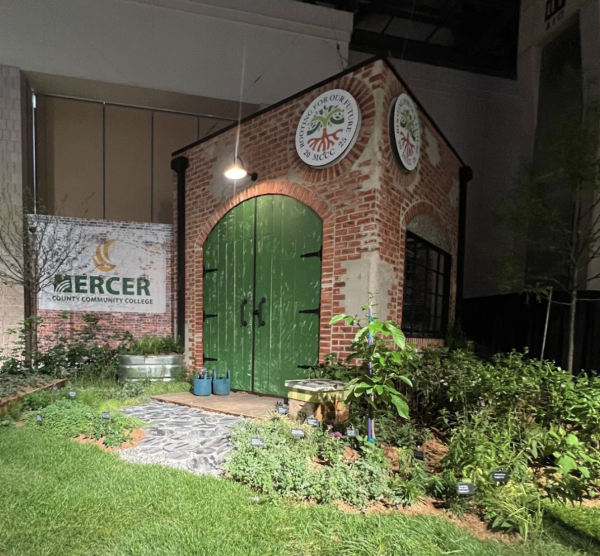
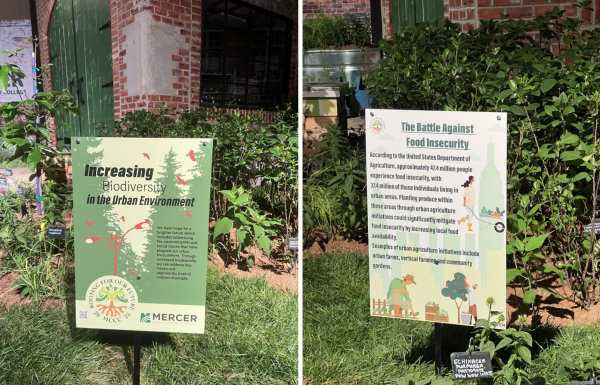
The signs scattered around the garden bring attention to our ever growing climate change initiatives, as well as food insecurity in our population. Just like the name of the piece implies, Mercer County Community College is rooting for our future. The goal with this piece was to “Become inspired for a better future, where roots are serving as the foundation for our communities and an improved ecosystem. Through increased biodiversity within urban and peri-urban environments, we can manage stormwater, mitigate the heat island effect, eliminate food insecurity, and ultimately improve our physical and mental well-being.” You can see just how this exhibit fits into the theme. The “Gardens of Tomorrow” start with our changes, that result in a better environment, and better versions of ourselves.
Last, but certainly not the least of these large exhibitions, was my personal favorite, Color Carnival, by Waldor Orchids in Linwood New Jersey. This exhibit was truly nothing but a colorful adventure. This display featured a vibrant roller coaster, overtaken by heaps of giant, floral bushels, as well as a small fountain located in the center of the exhibit.

Phalaenopsis was the real theme of this exhibit, according to its creator. “From large flowered standard whites-to big lips and dye injected flowers-each car shows a modern avenue of innovation with the ultimate goal of being able of producing a flower of any size, shape and color. The gap in the track represents the missing link to the future of orchid breeding.”
Personally, I feel that this piece is also up to one’s own interpretation. I felt that, similar to the idea of “Gardens of Tomorrow”, that there can be new life found within old ideas. There are many abandoned spaces, homes, and even amusement parks that can be made anew. An idea, such as the one depicted in Color Carnival, could be the beginning to a revival revolution.
As you can see, the Philadelphia Flower Show does not disappoint. Whether you attend for research sake, or just for the fun of experiencing something new, there is something there for everyone. Next year, the event will be taking place in the Philadelphia Convention Center from February 28th, to March 8th, and I highly recommend a visit. It is a great opportunity to support local artists and appreciate something you don’t know much about. I promise you, there is a lot to learn.



